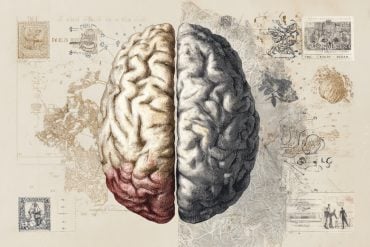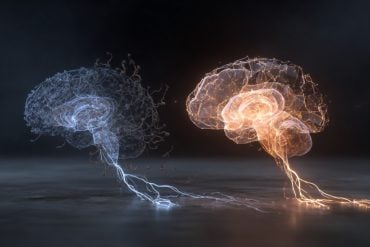Summary: To spot a missing item, people are 20% faster at locating what they are looking for if they factor in latent physical traits, like hardness or softness.
Source: Johns Hopkins University
Anyone who’s ever tried to find something in a hurry knows how helpful it is to think about the lost item’s color, size and shape. But surprisingly, traits of an object that you can’t see also come into play during a search, Johns Hopkins University researchers found.
When participants were asked to spot everyday objects in clutter, they found them about 20 percent faster if they could factor in latent physical traits like hardness or softness – even though people had no idea that they were considering those factors.
“What makes the finding particularly striking from a vision science standpoint is that simply knowing the latent physical properties of objects is enough to help guide your attention to them,” said senior author Jason Fischer, a cognitive neuroscientist in the university’s department of Psychological and Brain Sciences. “It’s surprising because nearly all prior research in this area has focused on a host of visual properties that can facilitate search, but we find that what you know about objects can be as important as what you actually see.”
The findings are published in the Journal of Experimental Psychology: General.
Fischer’s Dynamic Perception Lab studies how people’s intuitive understanding of physical properties and dynamics influences how they interact with their everyday environments, and also how people focus on the things they need to when there is so much to see in the world at any given moment. Those lines of research come together here, as the team wondered if someone’s knowledge of objects’ physical attributes would influence their attention in a visual search.
For instance, people know through experience that eggs are light and fragile, and canned products are heavy and sturdy. When bagging those things at the grocery store, people would likely put the heavy cans at the bottom of a bag and the fragile eggs on top. But if you can’t see the fragility or the heaviness, you just inherently know it, would that knowledge help you find something?
To get at the answer, lead author, graduate student Li Guo, ran a series of visual search experiments where people were asked to locate everyday objects amid clutter. The target was sometimes differentiated by its hardness. Guo and the team found that participants implicitly used the hardness distinction to locate a target more quickly, even though none reported being aware that hardness was relevant.
“You’re automatically leveraging what you know about hardness to avoid being distracted by the other things,” Guo said, as Fischer added: “If you are searching for a sweater in a cluttered room, without any awareness of doing so you are able to avoid wasting time searching through the hard objects in the room and instead focus on the soft ones.”

The more items in the search, the greater the benefit of being able to differentiate them through hardness, the team found. The benefit existed even when participants were shown line drawings. And when the team tracked where participants looked while searching, they found that participants wasted less time looking at objects that didn’t have the correct hardness or softness.
“To me what this says is that in the back of our minds, we are always evaluating the physical content of a scene to decide what to do next,” Fischer said. “Our mental intuitive physics engines are constantly at work to guide not only how we interact with things in our environment, but how we distribute our attention among them as well.”
The team hopes to build on these findings by studying how what people intuitively know about the physics of objects might help them predict what’s going to happen next in an environment.
About this neuroscience research article
Source:
Johns Hopkins University
Media Contacts:
Jill Rosen – Johns Hopkins University
Image Source:
The image is credited to Jason Fischer/JHU.
Original Research: Closed access
“Knowledge of objects’ physical properties implicitly guides attention during visual search”. by Guo, Li,Courtney, Susan M.,Fischer, Jason.
Journal of Experimental Psychology: General doi:10.1037/xge0000776
Abstract
Knowledge of objects’ physical properties implicitly guides attention during visual search
Our interactions with the world are guided by our understanding of objects’ physical properties. When packing groceries, we place fragile items on top of more durable ones and position sharp corners so they will not puncture the bags. However, physical properties are not always readily observable, and we often must rely on our knowledge of attributes such as weight, hardness, and slipperiness to guide our actions on familiar objects. Here, we asked whether our knowledge of physical properties not only shapes our actions but also guides our attention to the visual world. In a series of four visual search experiments, participants viewed arrays of everyday objects and were tasked with locating a specified object. The target was sometimes differentiated from the distractors based on its hardness, while a host of other visual and semantic attributes were controlled. We found that observers implicitly used the hardness distinction to locate the target more quickly, even though none reported being aware that hardness was relevant. This benefit arose from fixating fewer distractors overall and spending less time interrogating each distractor when the target was distinguished by hardness. Progressively more stringent stimulus controls showed that surface properties and curvature cues to hardness were not necessary for the benefit. Our findings show that observers implicitly recruit their knowledge of objects’ physical properties to guide how they attend to and engage with visual scenes.
Feel Free To Share This Neuroscience News.






